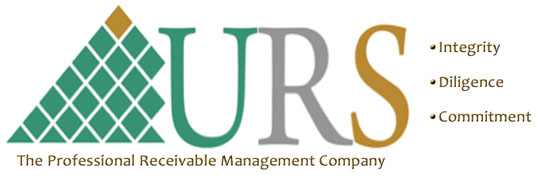Many medical practices are struggling to making ends meet and maintaining minimal cash flows.
The one key culprit is lower reimbursement rates, especially in family, general and internal medicine
practices. Many practice administrators are throwing up their hands in complete frustration.
Fortunately, there are several key areas of office administration and operation that can present
opportunities for increasing revenues and improving operating margins.
Accuracy – Accuracy produces efficiency, `maximization’, talent and cash flow. Accuracy should
be emphasized and encouraged at every possible opportunity. Employees should gain a sound
understanding of the fiscal meaning of `accuracy’. For example, the URS management team emphasizes
the importance of accuracy when reviewing charges, coding, entering demographics, posting payments
and responding to patient inquiries. Understanding this key aspect of production is absolutely essential
in those practices experiencing lower revenues and operating margins.
Let’s take a moment to evaluate the negative financial impact of a billing staff which continually makes
charge and demographic entry mistakes. If it takes one member of the billing staff to accurately conduct
the daily processes of entering charges, demographics, posting payments, insurance follow-up and
responding to patient inquiries, one can attribute reasonably accurate production costs to perform
these tasks.
Now let’s look at another staff member who conducts the identical tasks but it takes an additional 3
hours of the following day to complete them because mistakes have been made and additional time is
needed in the next day to finish. Obviously one can see the added costs to the practice which directly
impacts the practice’s bottom line.
Establish Benchmarks – One way to encourage and better manage efficiency within the practice is by
establishing `production benchmarks’. Benchmarking efficient production modeling facilitates personal
and team challenges and competitiveness within the medical practice. It is a management concept
which benefits management because it assigns both personal and team responsibilities resulting, in
many cases, less time for management oversight.
One key and very important aspect to `benchmarking’ production is rewarding achievers; whether
a team or individually, financial rewards tend to encourage and motivate certain staff members to
wanting additional responsibilities and desiring potential management positions.
The biggest and most obvious financial benefits of benchmarking are accelerating cash collections,
improved practice efficiencies and operating margins. The URS management team has been utilizing
these production benchmarking management concepts since 1998 and our billing services have greatly
benefitted each client; many for more than 5 years.
Wednesday
Tuesday
5 Tips for Successful Debt Collection
Here are some tips to implementing a successful collection of delinquent accounts. As part of our ongoing and presence in collections, we ask for your input. Please respond to the article if you have other tips and suggestions from your successes or if you questions. Please click on the below link.
1. Correct/Updated Demographics—It is veryimportant to ensure that ALL debtor(s)demographics are correct and current –complete full name, telephone number(s), home address(s), amount(s) owed, balance,age of account(s) and type of account(s). These data can be verified from theinstitution’s database, financial transactions, credit bureaus and various skip tracing websites. It is key to make sure debtor addresses are correct to ensure debtor is receiving all appropriate delinquent notices and information about the debt.
2. Sending Notice(s)—Notices should contain all pertinent information regarding the debt including balance due, amount past due, date and amount of last payment and importance of the debtor(s) contacting the banking institution. Notices should be mailed at specific intervals for maximum effect. For example, the firstnotice of delinquency is mailed 14 days past the contracted due date. Thesecond notice is mailed 21 days of due date and if no contact by the debtor hasbeen received explaining why payment is late or agreeing to payment arrangements, the account should be assigned to the collection for the `pre-30’collection approach.
3. Professionalism— one important key to achieving effective collection rates is maintaining professionalism. Professionalism, in concert with firmness and understanding, is absolutely necessary to achieving maximum results. Collectors should offer various payment options and taking into consideration debtor’s current financial situation and within the bank’s collection policy guidelines. Collections is an art and learning and understanding its purpose will add positive tones and results. Debtors will give many reasons for not making payments, but collectors must be patient and carefully listen to what is being said by the debtor. If debtors are expressing severe medical issues, a death in the family or other viable financial problems, collectors need to understand these dilemmas and offer other options in concert with the bank’s collection policies.
4. Working with Debtors—Debtors might not have the money to make a full payment, therefore it is important to work with the debtor(s) and offer alternative payment options which, of course, follow corporate collection policies. Some banking institutions have within its policies the option to settle accounts up to 15% of the total balance if paid within specific time periods. However, the ideal solution is working with delinquent customers and having them return to a satisfactory standing within the bank.
5. Accessibility to the Bank—Delinquent customers should be given several options for making payments or having accessibility to certain branches for making payments. When collectors send out notices or make follow up phone calls, collectors have to make it clear where or how debtors can make payments.
Subscribe to:
Posts (Atom)
